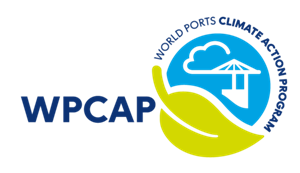
PORT OF LOS ANGELES TAKES ACTIVE ROLE IN WORLD PORTS CLIMATE ACTION PROGRAM (WPCAP) CONFERENCE
ROTTERDAM — February 5, 2021 — The Port of Los Angeles played an active role in the recent World Ports Climate Action Program (WPCAP) virtual CEO conference. In addition to Executive Director Gene Seroka, representatives from the Port’s Environmental Management and Cargo Marketing divisions also played key roles.
Allard Castelein, CEO of the Port of Rotterdam Authority and host of the conference, described the conference as “a force for good, paving the way for building sustainable port operations.”
“What binds us is a common belief that we have a role to play in fueling the energy transition,” Castelein said. “In the past ten months we have managed to keep the supply chain up and running. We can be proud of that. But let’s make no mistake. Behind the COVID wave, there is a bigger wave coming: global warming. We want to play an active role in addressing that situation. Not waiting for regulation but take control over our own destiny. Our network of leading international ports has gained critical mass to realize change successfully.”
WPCAP was launched in 2018 at a global climate conference in San Francisco. Besides the Port of Los Angeles, other ports in the action-oriented network include Antwerp, Barcelona, Gothenburg, Hamburg, HAROPA port of Le Havre, Long Beach, New York/New Jersey, Rotterdam, Valencia, Vancouver, and Yokohama.
WPCAP focusses on clear actions to combat climate change. Port coalitions work on specific projects, involving as much as possible shipping lines, terminals and energy providers in order to maximize impact.
Energy efficiency
At the conference the working groups presented a series of new actions. The first agreement was made on the topic of enhanced energy efficiency. The group noted work being undertaken by the IMO Global Industry Alliance to Support Low Carbon Shipping (GIA) and subject matter experts of ports, terminals and shipping. This work is about identifying nine measures that ports could take to reduce greenhouse gas emissions from shipping. These measures will first be discussed with NGO’s from both ports and shipping sector by the end of February during an IMO GIA meeting.
CEO’s agreed that each port would at least implement one measure this year, ranging from speed and dead weight optimization to facilitating main engine repairs and hull cleaning during cargo operations. CEO’s embraced this way forward with a call to action to go for a measure with most impact.
Power-to-ship
Power-to-ship has the clear potential to enhance air quality and reducing emissions in the port. In ports, ships can switch off their own power generation and make use of, preferably, green energy infrastructure supplied by port and terminal organizations. The working group quantified the business case if ports would work much more together on introducing power-to-ship. The outcome is that standardization could bring down cost with 5 to 10 million Euro’s per port. Hamburg, Antwerp, Le Havre and Rotterdam will take this work to the next level, meaning working together on investment plans and jointly approach ship owners as power-to-ship means adjustments both in ports and on ships.
Port of Hamburg CEO Jens Meier was pleased with this result: “Working together pays off. We have learned so much from Los Angeles over the years making the first steps with power-to-ship in Hamburg. That is the power of this port network.”
Related to power-to-ship, a new tool was shown that is already published on the IAPH website. Using Google Earth you can visit 68 ports around the world that have introduced power-to-ship installations. The tool gives information on infrastructure, configuration, usage, connecting time, emission reductions and policy instrument – and in doing so it a key tool for sharing information around the world.
Incentives
The policy working group stressed that policy instruments remain an important tool to stimulate emission reductions in the maritime industry, using for instance incentives, pricing policies and regulations – taking in mind guiding principles of competition law. The WPCAP CEO’s made it clear that there are various ways to achieve results on this topic. Robin Silvester, CEO of the Vancouver port, stimulated the working group to make the next step to a converged approach.
Robin Silvester: “Incentives for ships owners to introduce techniques as hydrogen, wind assist or battery should be considered, but I am keen to see whether for instance it is possible to arrive at a common scoring mechanism that is incentivized instead of stimulating one fuel technique.”
Gene Seroka, Executive Director of the Port of Los Angeles, supports a coordinated approach. “There are a host of options to consider with respect to incentives. It’s well worth our time to share best practices and see if a common approach makes sense.”
The working group will report back on this direction later this year.
Alternative fuels
On the topic of accelerating and growing the use of sustainable marine fuels for deep-sea/ocean-going vessels, agreement was made to continue the direction of working together with all customers of the ports. CEO’s committed also to intensify the need for alternative fuels in their own engagements with for instance shipping lines.
Finally, the database that has been put together on cargo handling equipment for the overall way forward to realize climate neutral ports will continue to be used in engagement with especially terminal operators.
The gathering of some 70 representatives of the twelve port was pleased with progress and agreements made. Castelein: “This gives new energy. The outcome is a proof point that we remain action-oriented and as a network of ports very relevant. In identifying pathways for the future we have made new steps; hence we continue to make a difference.”
The next WPCAP CEO conference is planned for October this year.
Media Contacts:

